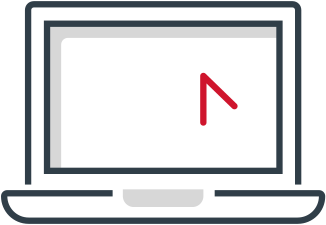Auto logout in seconds.
Continue LogoutMany companies have shifted to a hybrid or remote work environment during the pandemic—a move that has decreased the number of opportunities for workers to cultivate relationships and build industry connections. Writing for Fast Company, Denise Hamilton, CEO and founder of WatchHerWork, offers four tips for networking in the "hybrid era."
Tips to make telework work for your team
'It takes a village'
Hamilton writes that she has long told friends and clients that "it takes a village to raise a career."
"You need to build contacts across your industry, cultivate those relationships, and be as helpful to others as you want them to be to you," Hamilton writes. "But in the pandemic era, your village has shrunk."
Several studies suggest that with so many people working in a remote or hybrid environment, people are interacting with fewer colleagues—both within their organizations and across their industries.
According to Hamilton, we're less likely to meet new people outside of our team or department when we are not going into the office. In addition, there have been fewer opportunities to network with people from other companies since many conferences have been cancelled over the course of the pandemic.
"Even those people who choose to go to the office or attend in-person events when possible are still making fewer connections since many other people are staying home," Hamilton writes.
4 ways to build your 'village' in the hybrid era
1. Reach out on digital platforms
Hybrid or remote work creates fewer opportunities for "water cooler conversations," according to Hamilton. She suggests replacing those interactions with reaching out to potential connections on digital platforms, including LinkedIn, Slack, or email.
"Find people whose career track records show they've worked their way up the ranks in your field, or in another field that interests you," Hamilton writes. She also suggests reading or watching content they've posted and identifying specific, interesting things to potentially discuss with them. Then, just "reach out, simply saying you'd love to connect."
However, "[d]on't take it personally if people don't respond. Many are overwhelmed or very busy. If you don't hear back from them, move on to someone else," Hamilton writes.
2. Set numeric goals
Even before the Covid-19 pandemic, Hamilton's standard advice was to "aim to make at least 10 quality new contacts every three months."
Hamilton suggests incorporating this goal into daily routines, aiming to receive one positive response by the end of each week.
"People are very busy, so most won't write back. That's OK," Hamilton writes.
3. Schedule 15-minute conversations
Hamilton suggests requesting "a quick Zoom session" to get to know a potential connection. "People remember you and feel more connected to you once they've spoken with you," Hamilton writes.
According to Hamilton, the conversation should be brief, limiting it to around 15 minutes so it's "not too burdensome."
She also recommends labeling the Zoom request an "informational interview," which she says indicates interest in joining the connection's company.
4. Be authentic
According to Hamilton, the most important thing to remember is to "be your authentic self."
"People can tell when someone is being fake or just trying to find a way to use them," Hamilton writes. "Open up honestly about any challenges you're having, and listen intently when they share. Do your best to connect with them as people. Everyone is craving more human connection."
She recommends staying in touch with connections "to whatever extent they seem to feel comfortable." And Hamilton asserts that, even amid a busy schedule with little time for networking, "building your network is a crucial investment in yourself."
"I've been recruited for every job I've ever had by people with whom I built relationships," Hamilton writes. "Your village sets you up for a stronger future." (Hamilton, Fast Company, 1/12)

Covid-19 has introduced unprecedented challenges for managers who may now be managing a remote team or a team adapting to ever-changing circumstances amidst the pandemic. This toolkit is for leaders who need new tools to keep their team productive, engaged, and aligned.
Don't miss out on the latest Advisory Board insights
Create your free account to access 1 resource, including the latest research and webinars.
Want access without creating an account?
You have 1 free members-only resource remaining this month.
1 free members-only resources remaining
1 free members-only resources remaining
You've reached your limit of free insights
Become a member to access all of Advisory Board's resources, events, and experts
Never miss out on the latest innovative health care content tailored to you.
Benefits include:
You've reached your limit of free insights
Become a member to access all of Advisory Board's resources, events, and experts
Never miss out on the latest innovative health care content tailored to you.
Benefits include:
This content is available through your Curated Research partnership with Advisory Board. Click on ‘view this resource’ to read the full piece
Email ask@advisory.com to learn more
Click on ‘Become a Member’ to learn about the benefits of a Full-Access partnership with Advisory Board
Never miss out on the latest innovative health care content tailored to you.
Benefits Include:
This is for members only. Learn more.
Click on ‘Become a Member’ to learn about the benefits of a Full-Access partnership with Advisory Board
Never miss out on the latest innovative health care content tailored to you.
